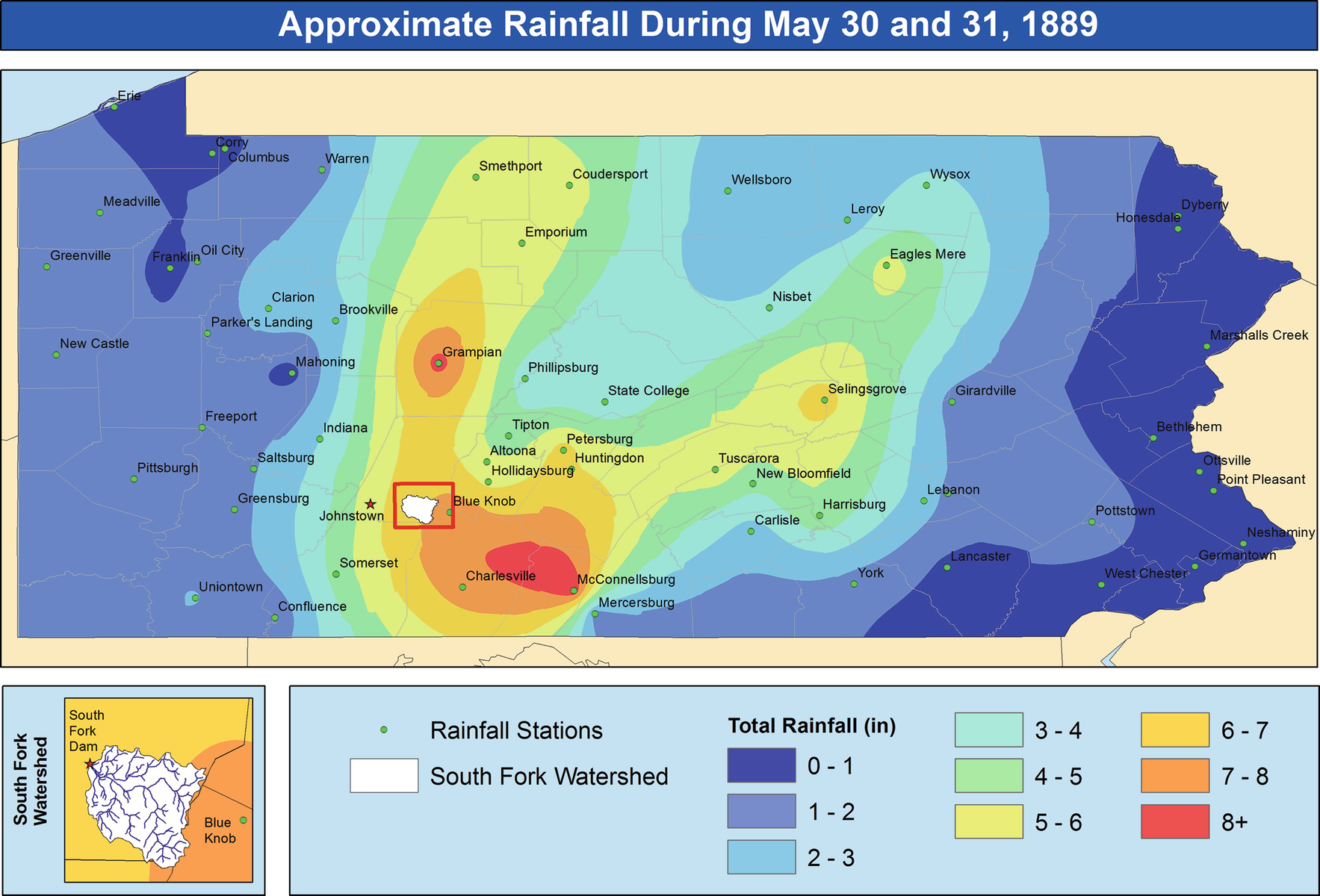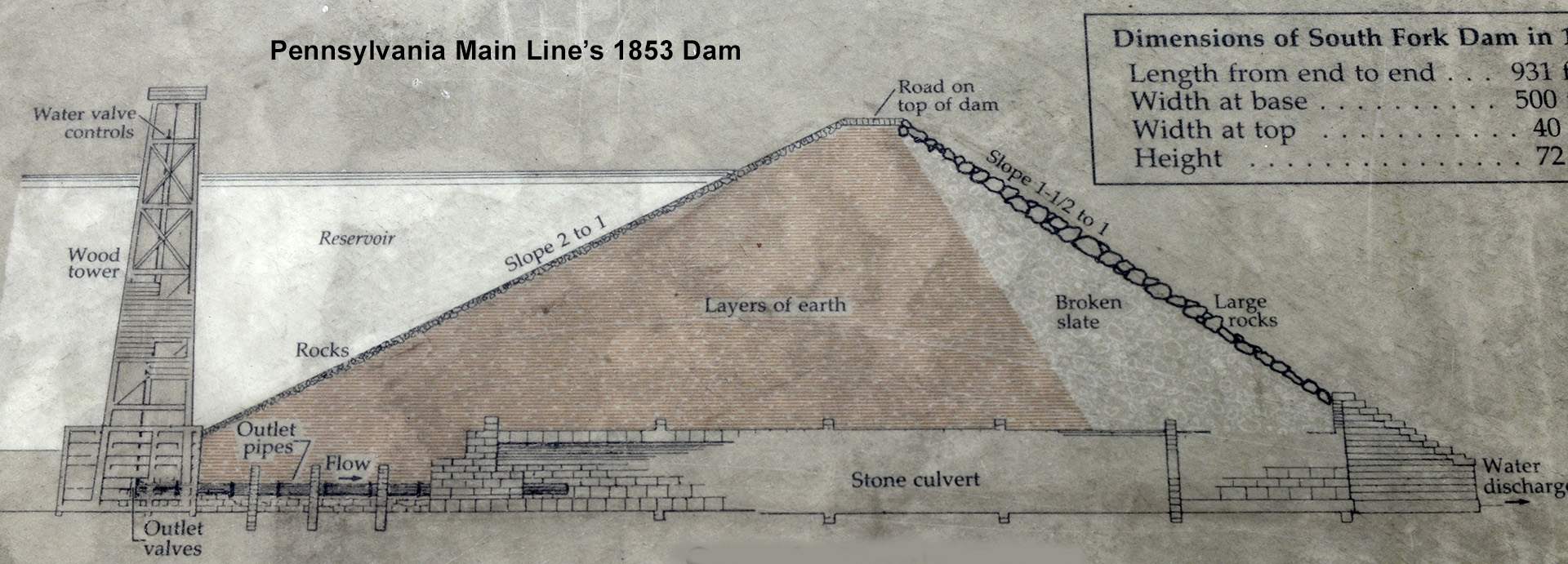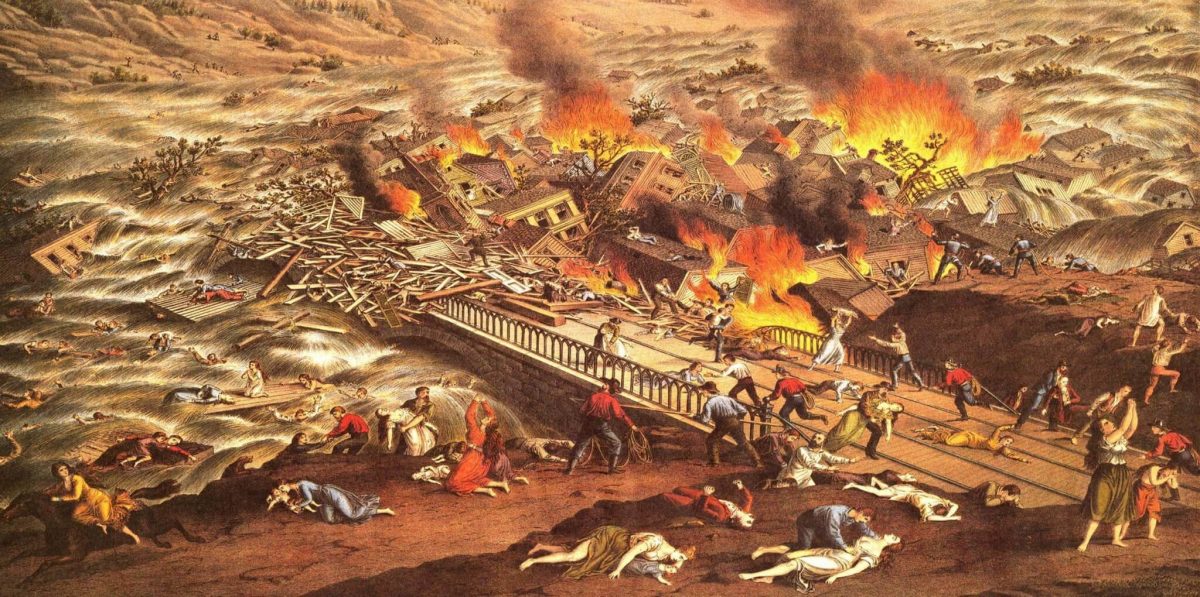The line between natural and unnatural disasters is often ambiguous. Dam breaches tend to blur this line since natural events usually spur the dam’s destruction, but humans could have taken precautions to prevent the disaster. During the Johnstown Flood, it was unclear whether human error was primarily to blame, or if the disaster was beyond reasonable human control.
The primary case for categorizing the Johnstown Flood as a natural disaster was the extremely unusual weather that Philadelphia experienced in 1889. A low-pressure weather system developed in the Midwest, strengthening the numerous storms that ravaged the area that year. On the night of the flood, Johnstown experienced record-high amounts of rain (Winklestein 2008). The increased precipitation before the fatal storm caused the water levels of the lake to be much higher than usual. Every dam has a limit to the amount of precipitation it can manage. Enough rain would destroy any structure and the weather is seemingly beyond anyone’s control.

However, the industries in Johnstown may have actually contributed to the unusual weather. Experts suggest that the hot particles from industrial chimneys may have seeded cloud layers and induced precipitation. If the nearby factories attempted to reduce their pollution, there might not have been as much rain in 1889 (Coleman 2019). Though, it would have been nearly impossible to hold any person or company accountable for causing enhanced rainfall.
Even if natural causes incited the dam breach, many argued that the people overseeing the dam still should have prepared for such circumstances. If the dam and water levels were inspected more frequently and experts determined how much precipitation the structure could withstand, they could have predicted that the dam would breach beforehand. Also, the South Fork Dam failure of 1889 was not entirely unexpected since the dam experienced partial breaches multiple times before. From 1857 to 1862, there were many leaks in the drainage pipes. In 1862, the dam even partially collapsed. The embankment was seriously damaged, with a sixty-meter section washed out (Coleman 2019). There were no serious consequences since the water levels were very low, so the event did not raise much alarm. The 1889 flood had multiple precedents, further conveying that the disaster was primarily unnatural and caused by negligence.

The construction flaws of the South Fork Dam also suggest that human error was to blame. A.M Wellington, the editor of Engineering News magazine, wrote, “No engineer of known and good standing for such work could possibly have been engaged in [the South Fork Dam], since, in the particulars mentioned, it violated the most elementary and universally understood requirements of good practice” (Engineering News 1889). Although, this article was written ten days after the flood, and it is much easier to critique the construction of a failed dam in hindsight. However, some experts uncovered the faults in the dam’s design well before the Johnstown Flood. Unfortunately, no one ever followed up on these discoveries with tangible action. Robert Halliday, the Superintendent of a Division of the Pennsylvania Railroad, inspected the dam in 1880 and found it unsafe. This knowledge was apparently not a priority for the Pennsylvania Railroad, since the information was not released until after the disaster (Coleman 2019). There is no evidence that any further inspections were undergone by engineers experienced in hydraulics or dam control.
Even when the possibility of a dam breach was acknowledged, the public underestimated the level of destruction that could be caused by such a disaster. In 1881, a Johnstown Tribune article asserted that “there was some danger should the dam break,” but since the water would distribute itself over the many miles to Johnstown, “…there is not much probability its power would be very great here”(Coleman 2019). Clearly, this claim was untrue and based on no substantial evidence. If experts researched the consequences of a South Fork Dam failure more carefully, they would have realized how necessary the stabilization of the dam was. Coincidentally, the newspaper column besides this one advertised Dr. J.K. Lee, Dr. L.T Beam, and Justice of Peace John H. Fisher, all of who would die in the flood eight years later (Coleman 2019).
Whether or not a natural cause spurred the dam’s failure, the human inaction that impacted the disaster was entirely unnatural. As discussed in the Avoidance of Legal Blame section, blurring the line between natural and unnatural disasters allowed the owners of the dam, the South Fork Fishing Club, to evade legal consequences. Following multiple investigations into the reasoning behind the dam’s failure, the general consensus was that the disaster was a result of human error and shortsightedness. However, the club members took advantage of the ambiguity and their considerable connections in order to legally portray the disaster as an act of God (PA Inquirer, June 7, 1889). The Johnstown Flood was not natural enough to convince the public of the club’s innocence, but it was too natural for anyone to effectively assign legal responsibility. Ultimately, the Johnstown Disaster raised a question that should have been clarified by the American legal system beforehand: when does a disaster become predictable enough that it is no longer natural, and is instead a result of human negligence?
